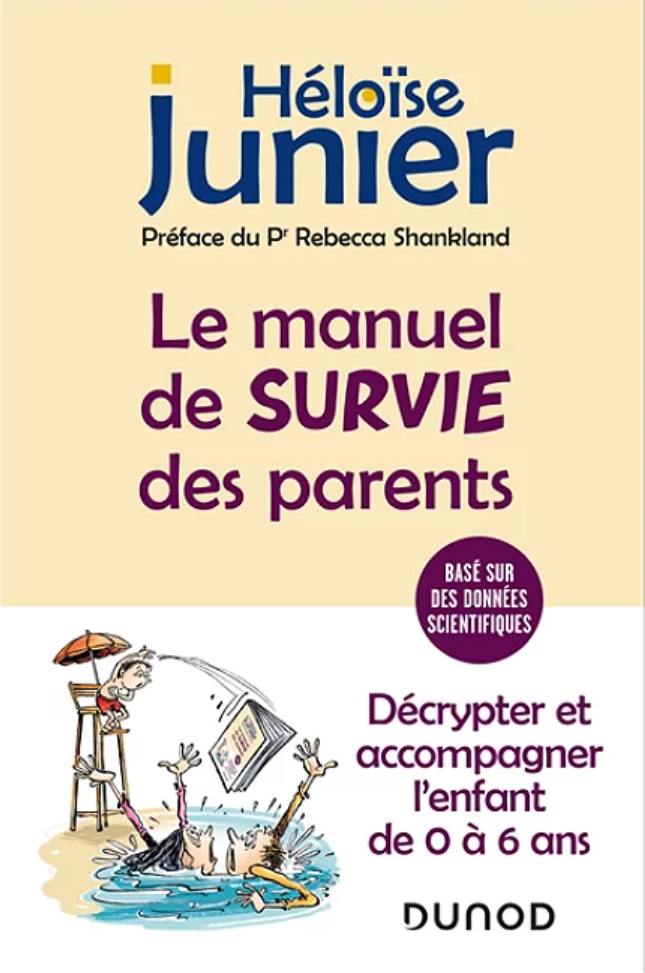
Are you a parent looking for answers? Discover my « Survival Manual »!
This April 27, 2022, the new, revised and expanded edition of my « Parents’ Survival Manual » (published by Dunod in 2019) has landed at your local bookseller. A practical guide for all parents who have lots of questions about their child and want objective, scientific answers!
Should he be forbidden to sleep? in our bed? What about pacifiers?
Why does he try to go up the slide by the slope (when the builder has gone to the trouble of designing a super staircase)? Why does he lose his temper at the drop of a hat? Does day nursery really make you sociable?
How do I react when he refuses to do what I ask? How do I turn him into a super-intelligent future polytechnician?
In this handbook, I’ve compiled the most frequently asked questions I receive from young parents. In the form of practical sheetsI’ve answered them on the basis of scientific research and the latest discoveries about the brain. Click here to discover the SUMMARY I’ve put together for you.
Click here to read my book reviews on the websites Papa Positive, Apprendre à éduquer and Les Pros de la Petite Enfance!
What’s the purpose of this manual? Threefold triple :
n°1: decipher your young children’s daily behaviours (Why does my child smile when I scold him?)
n°2: sweep away preconceived ideas about education and children passed down from generation to generation (no, just because your child didn’t go to nursery school doesn’t mean he or she is doomed to a lonely, bitter existence!)
n°3: give you invaluable advice (why is it better to give your child a cuddle than to yell at him or her?).
All with a touch of humor and derision, and a healthy dose of kindness!
How did this manual come about? This manual was written following the success of my first book for professionals in the field, the « VERY Practical Guide for Childcare Professionals », illustrated by Lise Desportes. illustrated by Lise Desportes (Dunod, 2021 – 2nd edition), which sold over 13,000 copies!
book for professionals in the field, the « VERY Practical Guide for Childcare Professionals », illustrated by Lise Desportes. illustrated by Lise Desportes (Dunod, 2021 – 2nd edition), which sold over 13,000 copies!
This manual is the fruit of a long and painstaking process that began eight years ago in the field, in early childhood establishments. It is the result of hundreds of hours of child observation, conversations with professionals and consultations with parents, research and reflection.
What research did I base this manual on?
With a scientific background, I’ve fed this guide with findings from research in neuroscience, developmental psychology, cognitive, social and experimental psychology, as well as attachment theory, ethology (which studies animal behavior) and anthropology (I’ve always thought that taking a look at other cultures is always very instructive!). My aim is to bridge the gap between scientific research and the field.

